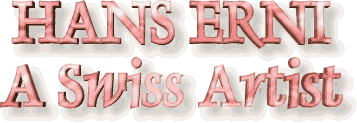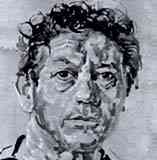 |
|
|
Hans Erni was born in the year 1909 in Lucerne, Switzerland as the third child of a family with eight children. After school and a study as a measurement technician, he learned at the Académie Julian in Paris (where he won an award) and at the Art School in Berlin. In Paris, a city that he visited many times, he had contacts with different artists, like Arp, Brancusi, Calder, Kandinsky, Mondrian and Moore, who influenced his paintings. The cubist artists Picasso, Gris and Braque had an even greater influence on him.
 |
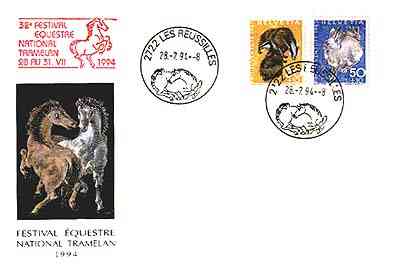 |
Quite soon came some public works, personal exhibitions and art awards. Some of the most important works (paintings, frescos, mosaics and tapestries) were ordered by big companies or organizations, like CIBA, Nestlé, Rolex Foundation, UN, UNESCO, ... He also executed large frescoes, like the 5 m * 100 m fresco for the Swiss Country Exhibition in 1939 or four frescoes for the Swiss Stand at the World Exhibition in Brussels, in 1958.
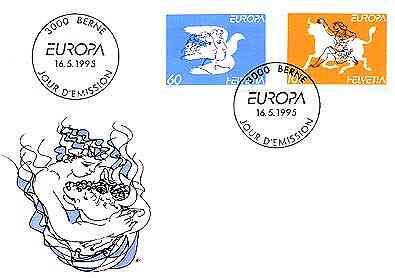 |
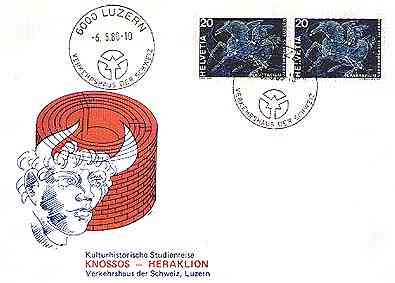 |
In the year 1949 Hans Erni won for the first time a competition of the Swiss Postal Service (PTT) for the design of a stamp. Since then he has designed over 90 stamps for Switzerland, Liechtenstein and the United Nations. He also created an impressive number of sculptures and ceramics, costumes for the theater and the opera, even banknotes and a label for the wine "Château Mouton Rothschild".
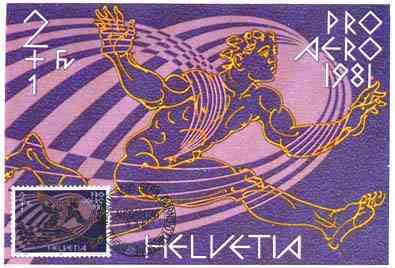 |
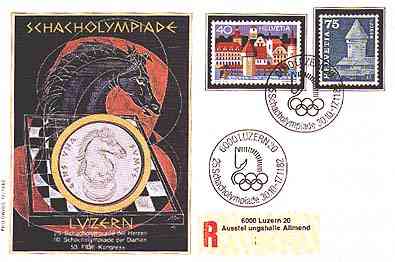 |
His earlier works were classified as abstract, sometimes as surrealistic and some critics of arts deplored the fact that Hans Erni departed from this direction in the last years of the thirties. He wrote in 1961: "I will not be limited, I wish to be constructive. The colors and the shapes are not a purpose as such, but a vehicle of an advanced art, which carries the existence of mankind over space and time."
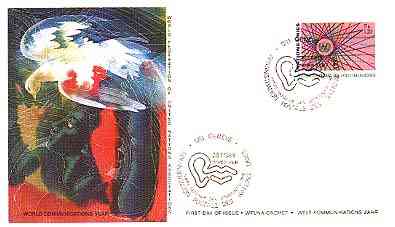 |
 |
In the Cronaca Filatelica, 1986 he wrote: "I am convinced that it is possible to express something even on the smallest space - supposing that you have something to say... The designing of stamps brought me further, because I had to force myself to be as simple and as clear as possible, with a minimum of lines and colors. I understood that it is possible to realize a good work even with only one color."
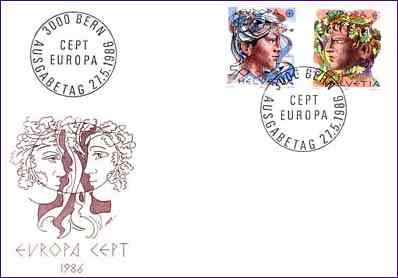 |
 |
Sources:
- Enrico Ghidelli, Hans Erni "Kunst im Kleinen", Multipress Verlag AG, CH-4153 Reinach/BL, May 1995. Addition to the Book (in German)
- Zumstein Catalogue 1998, Zumstein & Cie, Bern. Inhaber Hertsch & Co.Link in this site: Hans Erni - 100th Birth Anniversary
